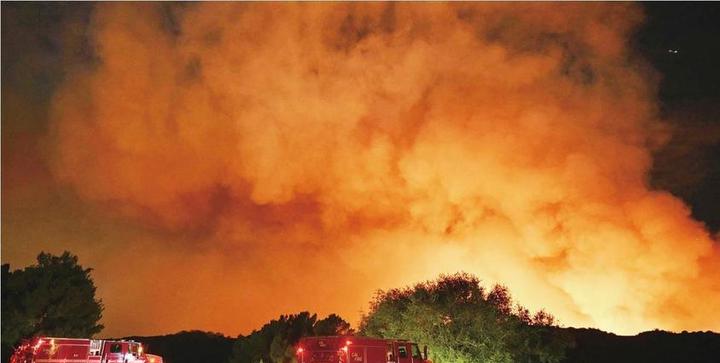California Wildfire Crisis: Understanding the Complex Battle Against Nature and Human Factors
California’s devastating wildfires have claimed 24 lives and destroyed over 2,500 buildings, with three major fires burning simultaneously in Los Angeles County. The challenging containment efforts are hampered by Santa Ana winds and systemic issues.

The ongoing wildfire crisis in Los Angeles County presents a complex web of natural, infrastructural, and human challenges that have made containment particularly difficult. These fires, including the Eaton Fire and Palisades Fire, have highlighted significant vulnerabilities in California’s firefighting capabilities.
The natural environment poses the first major challenge. The Santa Ana winds, known locally as “devil winds,” can reach speeds of up to 100 mph, rapidly spreading flames and embers across the landscape. These hot, dry winds combine with California’s Mediterranean climate and abundant vegetation to create perfect conditions for fire spread. The region’s chaparral and brush, naturally rich in flammable oils, serve as excellent fuel sources.
Infrastructure and resource management issues have severely complicated firefighting efforts. Perhaps most critically, water accessibility has become a major concern. Some fire hydrants have run dry during crucial moments, forcing firefighters to rely on alternative water sources. The Pacific Palisades reservoir, which should hold 4.4 million gallons of water, was reportedly empty when needed most.
The human element has added another layer of complexity. Despite having over 8,500 firefighters deployed, along with nearly 1,000 fire engines and dozens of aircraft, coordination challenges persist. The involvement of inmate firefighters, while providing necessary support, requires additional oversight and management. Local authorities' decisions regarding environmental protection and water management have sometimes conflicted with fire prevention needs.
Response efforts have drawn international attention and support. Various countries, including Mexico and Canada, have sent firefighting teams to assist. The fires have also exposed deeper systemic issues in California’s approach to forest management and urban development in fire-prone areas.
Prevention infrastructure has proven inadequate in many areas. While some buildings with concrete and steel construction have survived, many neighborhoods lack proper firebreaks and defensive features. This situation has been exacerbated by historical decisions regarding land use and development in high-risk fire zones.
Economic implications loom large over the disaster. Insurance companies had reportedly begun canceling policies in certain areas weeks before the fires, suggesting foreknowledge of the extreme risk. The fires have also attracted opportunistic criminal behavior, with reports of looting in evacuated areas.
The crisis has revealed the need for comprehensive reform in California’s approach to wildfire management, from infrastructure investment to emergency response protocols. As climate change continues to create more favorable conditions for wildfires, these challenges will likely become more frequent and severe.